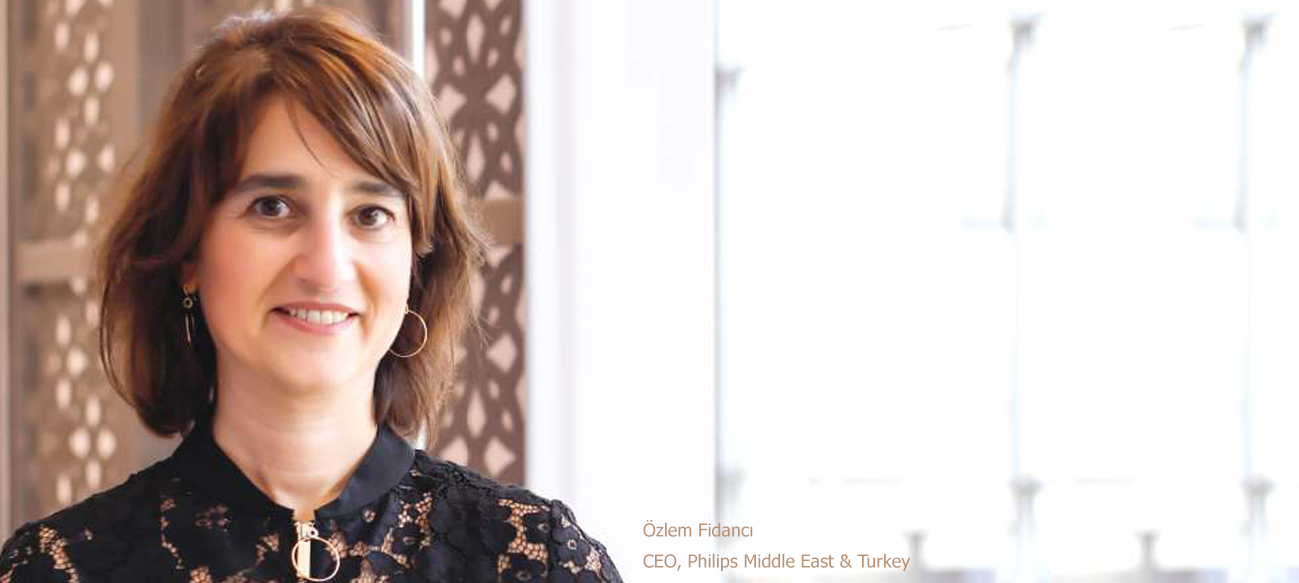Image Guided Therapy uses integrated solutions and smart devices to deliver accurate diagnoses by providing medical professionals with 2D and 3D imaging from three sides of the table without dislodging wires, tubes and pivoting or panning the table. Through the multi- dimensional imaging, doctors are able to easily pinpoint locations of distress without too many incisions and cuts
Commonly known to be a central concept of 21st century medicine, Image guided therapy is the use of any form of medical imaging to plan, perform and evaluate surgical proce dure s and therapeutic interventions. Image guided therapy techniques help to make surgeries less invasive and more precise, leading to shorter stays in the hospital and fewer repeated procedures.
The global image guided therapy systems market size was valued at $3.02 billion in 2017 and is anticipated to expand at a CAGR of 6.3% over the forecast period, according to Grandview research (2018 – 2025).
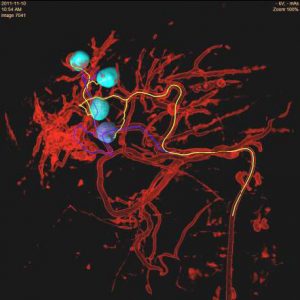 Pioneers in the field of image guided therapy, Philips believe that technological possibilities are endless but not limited. However, according to them there will be smarter therapeutic devices that not only guide treatment through vascular imaging but also deliver disease therapy.
Pioneers in the field of image guided therapy, Philips believe that technological possibilities are endless but not limited. However, according to them there will be smarter therapeutic devices that not only guide treatment through vascular imaging but also deliver disease therapy.
Philips recently partnered with Abdali Medical Center (AM), the new modern multi-disciplinary hospital. In collaboration with, Philips, Abdali Medical Center has commissioned the latest technologies to improve safety, ensure effective diagnoses and treatments that ultimately lead to improved patient experience. This includes the latest Philips Innovations in Image Guided Therapy, advanced Patient Monitoring, a full range of premium Ultrasound units and Digital X- ray.
The global image guided therapy systems market size was valued at $3.02 billion in 2017 and is anticipated to expand at a CAGR of 6.3% over the forecast period, according to Grandview research (2018 – 2025).
Abdali Medical Center and Philips have also co-designed a full state of the art patient connected care and monitoring solution that allows continuous accurate monitoring for their patients throughout their stay.
This partnership is consistent with Abdali Medical Center’s strategy to adopt innovation in supporting its mission to bring best practice patient-centered care and promoting research and teaching over time – and this equipment will be part of the platform available for future resident program trainings.
Özlem Fidancı – CEO, Philips Middle East & Turkey, tells Ayesha Rashid how Philips’ latest technological innovations, allow Interventionists to easily and confidently perform a wide range of routine and complex procedures with a unique user experience and at the same time help Abdali Medical Center optimize lab performance and provide superior care.
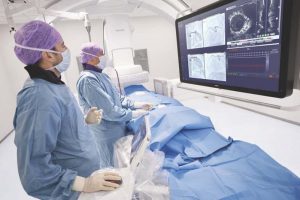 What kind of latest technology will you commission to Abdali medical center?
What kind of latest technology will you commission to Abdali medical center?
The latest Philips technologies commissioned to the Abdali Medical Center include the Azurion, a new- generation image guided therapy platform; the newest range of Philips Intellivue monitors, including Intellivue X3 for transport and Intellivue MX800 for advanced Patient Monitoring; the best tomographic offerings from the Philips EPIQ Ultrasound System and the incredibly efficient mobile X-Ray systems, which are deployed across all AM units and high acuity departments.
Which Image guided therapy will Abdali use and why?
Philips has commissioned Abdali Medical Center with Azurion, a new generation image guided therapy platform that allows medical professionals to confidently perform a wide range of routine and complex procedures with ease whilst providing patients with superior care. The Philips Azurion is suitable for performing full angiography studies
for cardiac, electrophysiology, neuro and vascular procedures and guarantees accurate and effective results. The Azurion platform provides unlimited possibilities to access and integrate information from different imaging modalities like CT, MR, US, PACS, etc. which is needed not only for planning the procedure, but also during the procedure for guidance and to make the correct therapeutic decision.
The possibilities are endless for the future of minimal invasive procedures through Image Guided Therapy. What are your thoughts on this?
Nowadays, innovation in healthcare not only focuses on faster and efficient solutions but also on better patient experience, which is first-priority for many healthcare institutions worldwide. This is where image-guided therapy comes into play by providing integrated solutions that advance minimally invasive solutions that reduce patient recovery time and post-procedure scarring. Azurion platform with its open architecture and interoperability possibilities enables simple and easy integration with any external device for minimally invasive and advanced procedures.
Image guided therapy is perceived to enable diagnostic technology for minimal invasive therapy. How is the therapy a truly integrated solution in one device?
Philips Image Guided Therapy comes with an intelligent motion control that allows clinicians to set up procedure- based workflow and broaden lab utilization. The device can be guided from anywhere across the table opening up more positioning freedom and patient access options. It always makes patient care priority by providing 2D and 3D imaging from all three sides without moving the table, while improving catheter, wire, and intubation control. And if required, the device can easily switch from minimally invasive to open surgery.
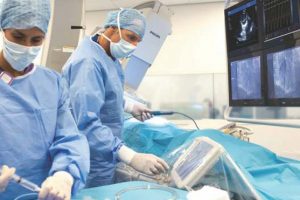 How does Image Guided Therapy make surgical procedures less invasive and more precise?
How does Image Guided Therapy make surgical procedures less invasive and more precise?
Image Guided Therapy uses integrated solutions and smart devices to deliver accurate diagnoses by providing medical professionals with 2D and 3D imaging from three sides of the table without dislodging wires, tubes and pivoting or panning the table. Through the multi- dimensional imaging, doctors are able to easily pinpoint locations of distress without too many incisions and cuts. Procedures like transcatheter aortic valve implantation (TAVI) through femoral access have become routine in many intervention labs, thanks to the superb image quality at low doses combined with multimodality information access and integration that allows deployment of right grah accurately.
How will the technologies decide, guide, treat and confirm the right care in real time during the procedure to enable better outcomes for each patient?
We at Philips believe that technology can not only make lives a lot easier but better as well. As a leader in image guided therapy, we provide integrated solutions in real time during the procedure for better outputs for every patient. The Philips Azurion lab has various intervention tools that help physicians treat the patient confidently during each phase of treatment. Philips IFR or instant wave free ratio helps physicians decide which lesion should be treated first in case of multiple stenosis in coronary artery. In the same way, tools like dynamic coronary roadmap provide real-time guidance by overlaying live fluoroscopy images on coronary angiograms, thereby eliminating or reducing the need to give contrast puffs to see the coronary anatomy. Philips Intravascular Ultrasound (IVUS) helps in confirming whether the stent was accurately deployed or not. Having worked with world class clinicians, we use our comprehensive portfolio of interventional imaging devices, smart devices, sohware and services to treat one patient every second worldwide. All together this enables us to optimize care delivery, reduce total costs and help clinicians treat patients better so they can return to their lives as soon as possible.
The cross-sectional digital imaging modalities MR I , CT are the most commonly used modalities of image guided therapy. Why?
As procedures become more complex, it becomes important to get 3D insights for treatment planning. Such 3D images can be acquired either in the angio room itself on the angiography system or can be acquired in a conventional MR or CT scanner. The cross sectional images can be imported from CT or MR if the patient has undergone such examinations and this information can be integrated in the angiography system for better treatment planning, intraoperative guidance and post procedural checks. Using the CT/MR images helps reduce X-ray radiation to the patient by avoiding Cone Beam CT acquisition on the Image Guided therapy system. Such multimodality imaging helps improve treatment outcomes with fusion of MR/CT 3D images with live fluroscopy to guide the devices to the right position and provide targeted therapy with high precision.
How will innovation improve patient experience?
Today, innovation is embedded within all aspects of healthcare. The healthcare industry is consistently creating and updating strategies to keep pace with the fast- changing world of information and technology. It has the ability to impact lives in the smallest to the biggest ways due to its operational effectiveness. From allowing consumers to schedule their health appointments online to quick and effective diagnoses for complex diseases and treatments, innovation has indeed come a long way in an incredibly short time when it comes to patient experience.
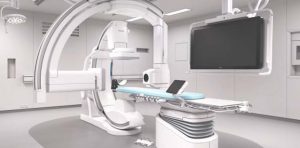 With healthcare sector advancing at full speed digitally, what could we hope to see in the future in terms of medical technology from Philips?
With healthcare sector advancing at full speed digitally, what could we hope to see in the future in terms of medical technology from Philips?
Philips is consistently developing new devices to keep up with an ever-evolving and digitally enhanced age. This is to enable better outcomes across the health continuum from healthy living and prevention, to diagnosis, treatment and homecare. We leverage advanced technology and deep clinical and consumer insights to deliver integrated solutions. We hope to spread Philips’ innovations all across the world and better the lives of millions of people to come.
Any upcoming devices?
There is a clear shih from open surgery to minimally invasive treatments. Some of the new developments in IGT are on improving the workflow in the lab to provide superior care for most complex minimally invasive procedures. Multimodality information is available at the touch of a button in the examination room. More and more, new clinical apps with anatomical intelligence are being developed to help segment the targeted anatomy automatically. New technologies around augmented reality imaging for precise spinal fusion will be available soon, which will not only allow high quality images for accurate navigation, but also provide high precision treatment options without using invasive frames for targeted therapy. There is a lot of research going on reducing radiation to patient and staff. Philips is working on technology that will enable navigation of devices without x-ray radiation. The future is all about artificial intelligence and Image Guided therapy systems with AI assisted decision support technologies that will enable the physicians to not only decide the right therapy and treatment strategy, but also assist them to determine the end point of the treatment.





